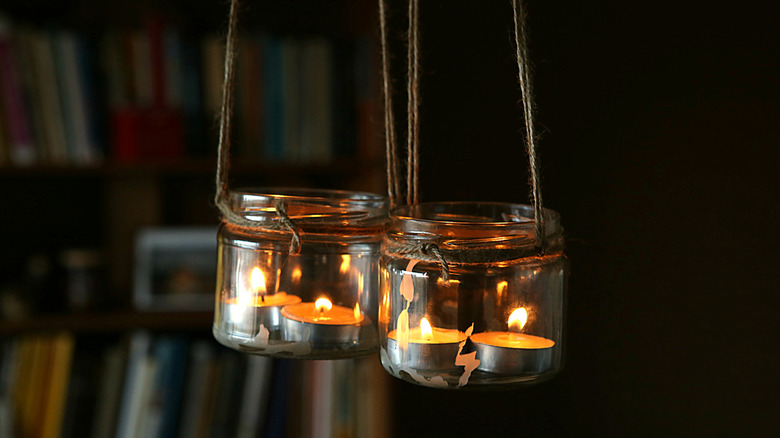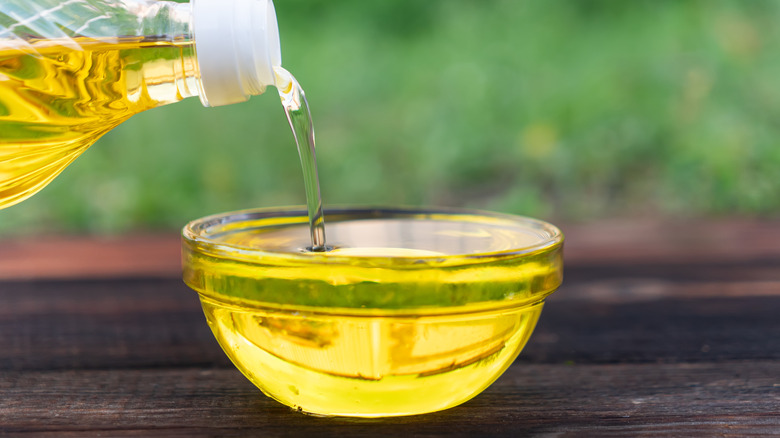Easy Ways To Tell If Your Glass Jar Is Heat-Resistant (& Why It's So Important)
With so many amazing ways to upcycle glass jars into unique home decor or versatile storage solutions, they are certainly a useful item to have on hand. Of course, not all glass jars are made equally. For example, some jars can't handle the heat and may crack or shatter when they come in contact with boiling water or the microwave. Whether you're reheating soup, canning vegetables, or turning thrifted glass jars and bottles into cute candle decor, having heat-resistant glass is essential for your safety. To identify different types of heat-resistant glass, there are a few tests you can perform such as submerging your jar in mineral oil. Other jars may be marked "microwave/oven safe" or even marked with a specific temperature rating. It's important to know this information before you attempt to put something hot in a glass jar because non-heat-resistant glass could shatter, causing harm to you and damaging your surroundings.
The best heat-resistant type of glass you can find is borosilicate glass, which is what the popular PYREX dishes used to be made of. More commonly, however, you will find tempered soda-lime glass which is what PYREX dishes are currently made of. Although less durable than borosilicate, soda lime is still an effective, heat-resistant option. Whichever type of glass you're looking for, there are different identification methods for each.
The oil test and other identifiers of heat-resistant glass
One of the easiest ways to identify borosilicate glass is to submerge it in vegetable, mineral, or olive oil. Because this type of glass shares the same index of refraction as certain oils, the glass will seemingly disappear when submerged. If your glass "disappears" during this test you can safely assume it is borosilicate and it should be able to handle temperatures up to an amazing 959 degrees Fahrenheit.
To identify tempered soda-lime glass, the oil test won't work. Instead, inspect the glass for obvious markers that indicated the glass jar's temperature rating. If you can't find that, look for other markers such as "microwave safe," "oven safe," or "for canning." Soda-lime glass also has a slight blue-green color, owing to the traces of iron inside. If there are no obvious markers and you're unsure about the color, you can also perform a heat test by applying a small amount of heat to the jar with a lighter. If it cracks, it's clearly not heat-resistant. But if it doesn't, it may be soda-lime glass. Soda-lime glass can handle temperatures of up to 662 degrees fahrenheit, but it's less resistant to sudden temperature changes. Still, it should serve as a suitable option for most at-home glass jar projects you have in mind.
Other types of glass shouldn't be used for high heat projects, but most average glass can still withstand temperatures up to about 158 degrees Fahrenheit. When coming up with clever ways to reuse old glass jars around the house, knowing if they can handle high temperatures will help dictate how you use the jar. If you're unsure, don't risk it as a shattered glass jar could cut you, ruin whatever you had in the jar, and cause a huge mess.

